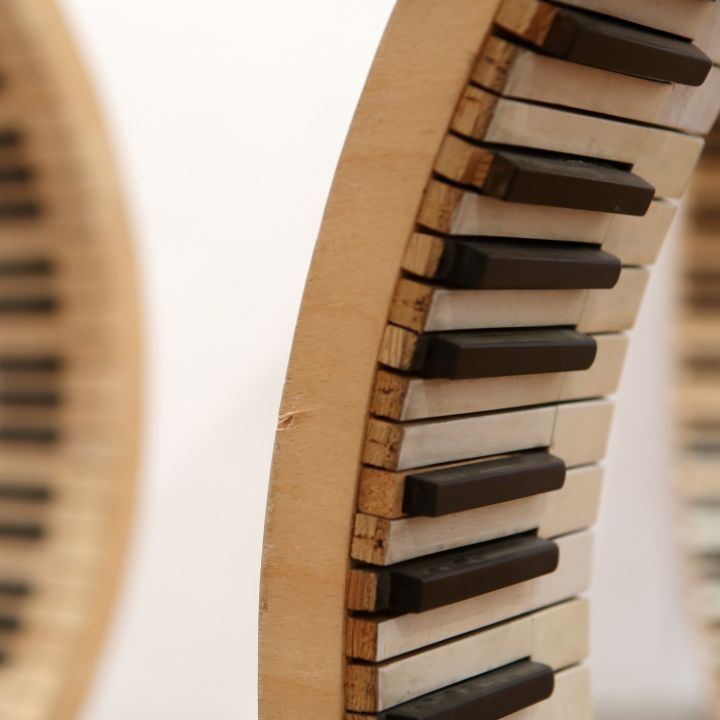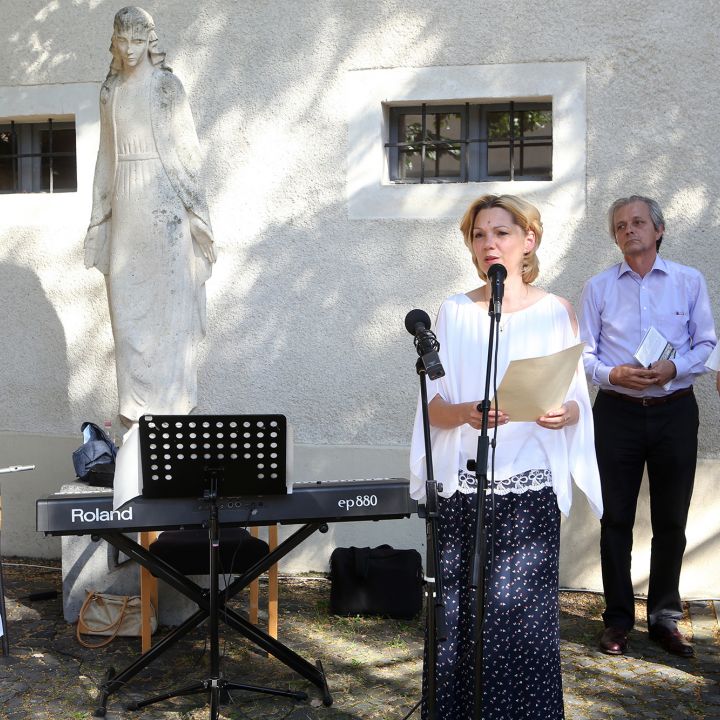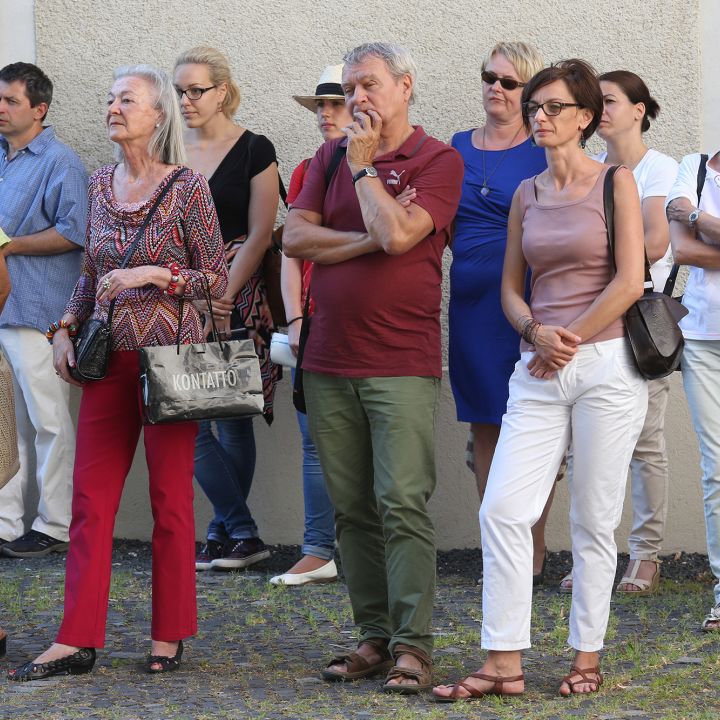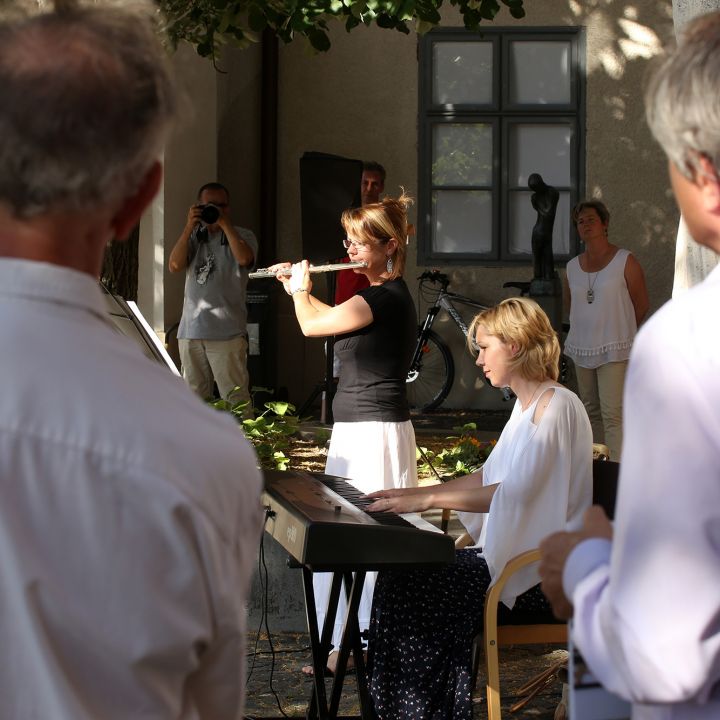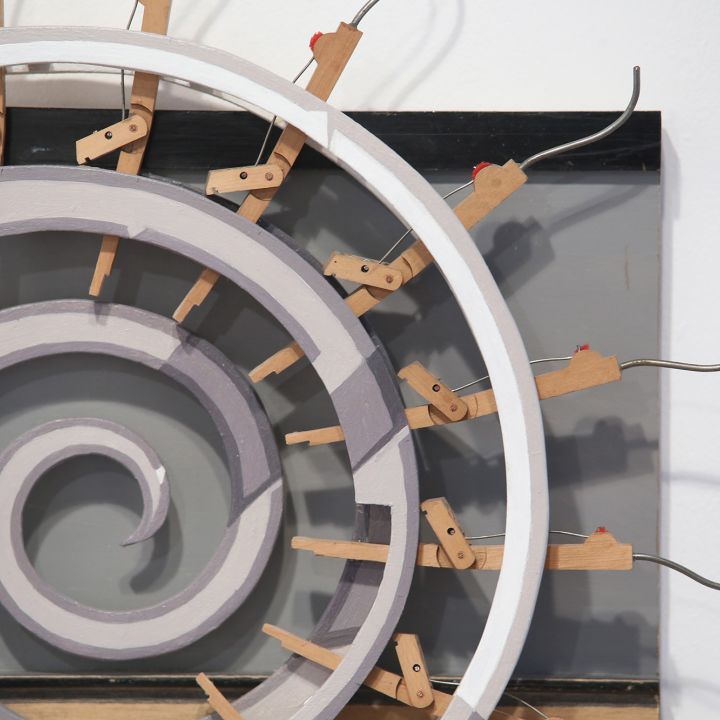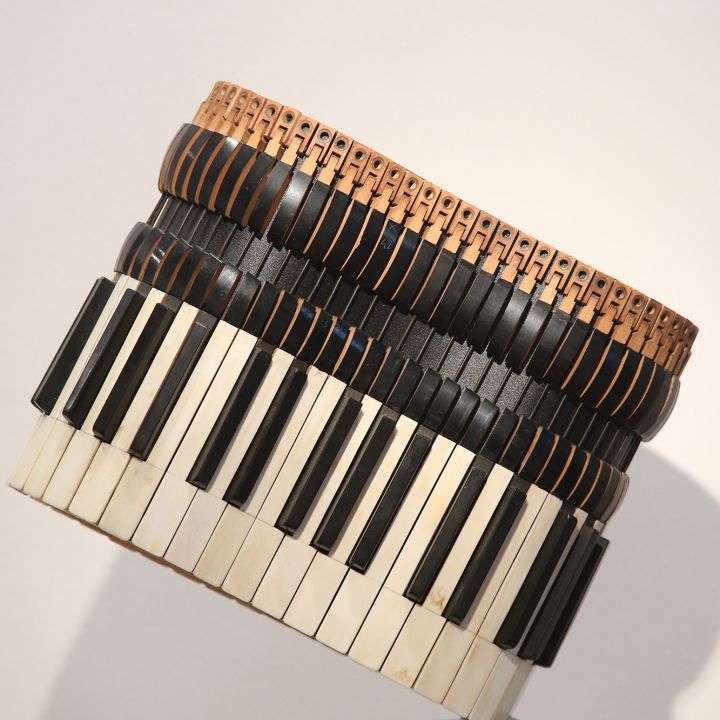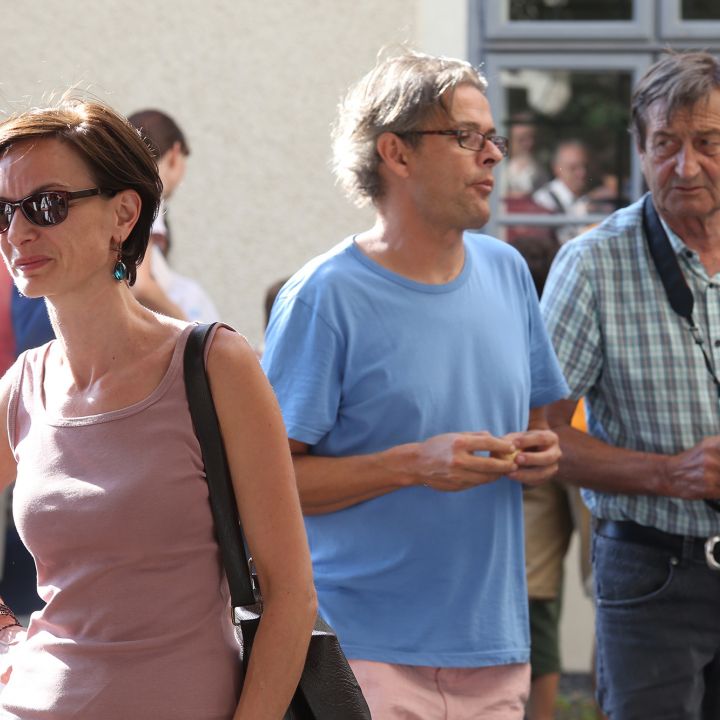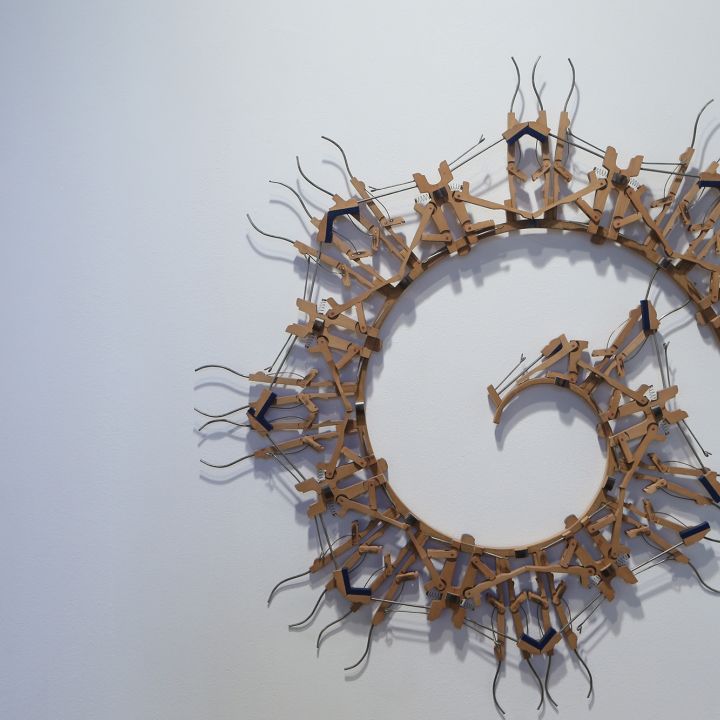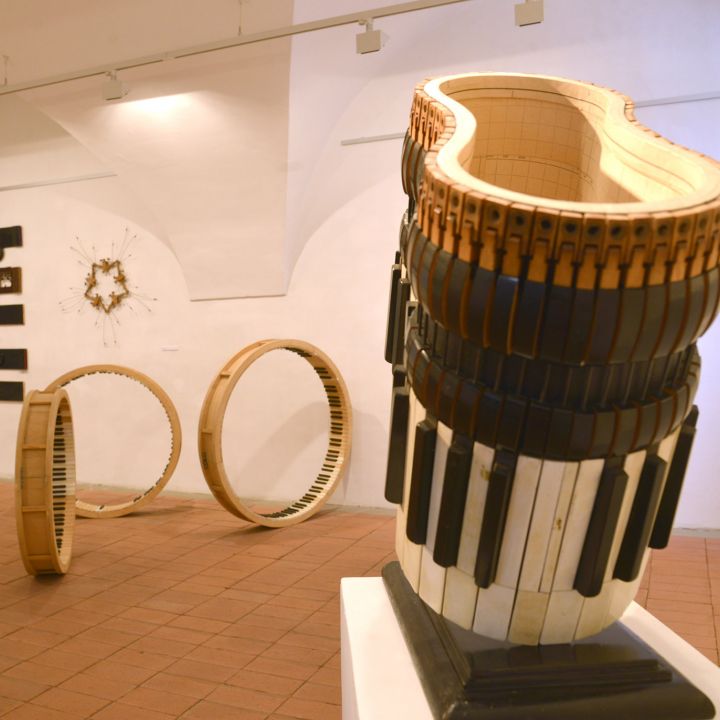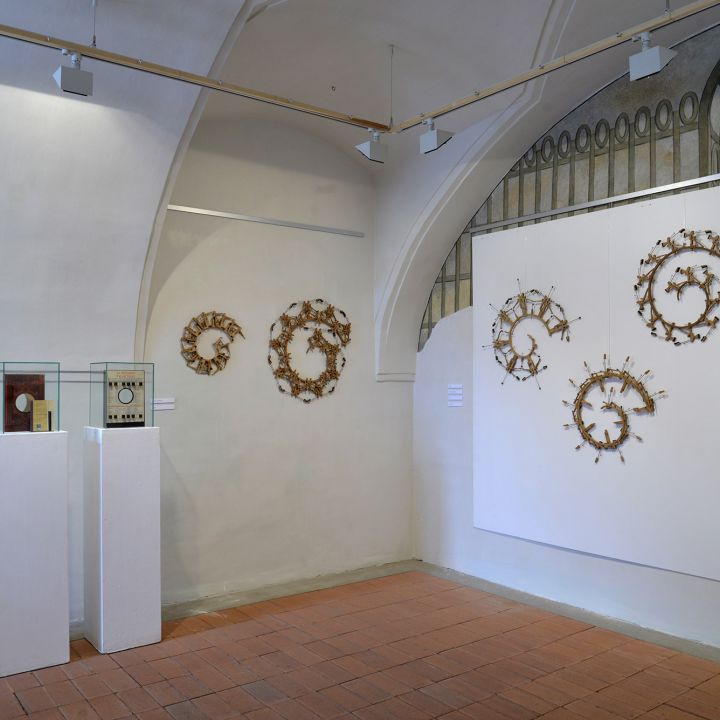In the 19th century renowned pianists and composers including Ferenc Liszt wrote piano transcriptions of orchestral works and operas. This is how otherwise rarely heard melodies spread and became playable in concerts, salons and civic homes. Only in this way was it possible to 'broadcast' music. Béla Bartók and his companions transposed folk songs to the piano and wrote musical arrangements and transcriptions.
"The exhibition opening in the Veszprém Castle Gallery on 8 July will present the object reinterpretations of the piano, "piano transcriptions". Discarded and scrapped instruments will be used to create flat sculptures, installations and book sculptures.
I learned to play the piano in primary school, but I stopped because of drawing and carving. I stopped practicing on my orphaned piano in high school. My classmate Pál Koncz born in Hódmezővásárhely came over and played Chopin and Rachmaninov. It was no longer a lesson played out of necessity, but real music-making. Pál Koncz a book, leather and paper restorer later settled in Veszprém and lived here until his death last year. If he were alive, I would ask him to open my exhibition in Veszprém.
The main role of art, especially portrait painting and sculpture before the advent of photography was to capture facial features. In a metaphorical sense, all art is a record. Land art, action art is captured on film and in photographs passed on to future generations. The useless instrument, transformed into a repository of art is recycled, polished. The painter's or sculptor's task is to ensure that the resulting object is not unworthy of the instrument it was made from. Fragile-looking, lace-like flat sculptures and book sculptures are created from pianos with cracked structures, rattling sounds and weighing a ton.
The Veszprém Castle Gallery provides an interesting backdrop for these objects, which are not only in the present, but also point to the past. I would like my works to resonate with these noble, much experienced spaces and some consonances that are difficult to plan in advance could emerge.
In addition to flat sculptures and collage pieces the exhibition will also include music stands, tin and copper company inscriptions and relics related to piano playing."
Márton Barabás, artist

